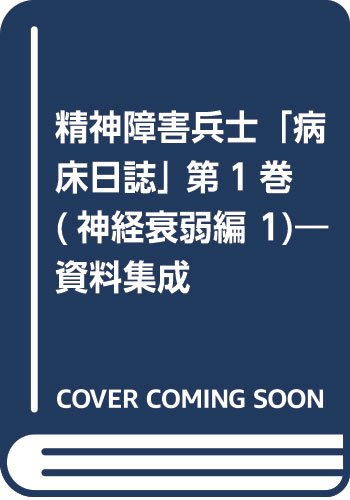2 0 0 0 OA 上田市における1歳6ヵ月児健康診査の概要
- 著者
- 大薮 泰 細渕 富夫
- 出版者
- 長野大学
- 雑誌
- 長野大学紀要 = ACADEMIC BULLETIN OF NACANO UNIVERSITY (ISSN:02875438)
- 巻号頁・発行日
- vol.10, no.4, pp.55-64, 1989-05-01
2 0 0 0 OA ダウン症の子をもつ父親の心理的体験のプロセス<教育科学>
- 著者
- 田中 俊輔 細渕 富夫 名越 斉子
- 出版者
- 埼玉大学教育学部
- 雑誌
- 埼玉大学紀要. 教育学部 = Journal of Saitama University. Faculty of Education (ISSN:18815146)
- 巻号頁・発行日
- vol.66, no.1, pp.77-91, 2017
1 0 0 0 OA 学校教育を通して見たフィンランドの矯正教育(Ⅰ)<教育科学>
- 著者
- 坂西 友秀 尾崎 啓子 吉川 はる奈 細渕 富夫
- 出版者
- 埼玉大学教育学部
- 雑誌
- 埼玉大学紀要. 教育学部 = Journal of Saitama University. Faculty of Education (ISSN:18815146)
- 巻号頁・発行日
- vol.65, no.1, pp.49-67, 2016
In this paper, we report the every day life of the studentes and the educational practices of the teachers in Vourrela School Home (corectional education facility) which locaed near the Helsinki . A purpose of this report is to offer a Finish document about correctional education to examine juvenile problems, correction education, and school education in Japan. In Finland, they does not have the Juvenile Act, and there is not the concept of “the fear criminal”, too. The age of legal adulthood is 18 years old, and the young age division is different from Japan, A basic idea of the correction education is to let a child come back to the normal life through education of improvement, the rebirth of himself. Daily work of the home is to aim at making a normal life through taking a class (education) at school and the communal living in the dormitory in facilities. The dormitory of home is completely equipped with a private room while being based on cooperative living. The Schoool Home respects human rights and independence of each student. It is common not only in a correction educational facility to make much of the human rights of the child and small individual guidance, but also in an elementary school, in a junior high school, and in a high school. Furthermore, the respect for human rights is the base of education, which is common to North European welfar state. There seem to be fact that most children were treated to enter this facility by delinquency. Although Finland is a country of the welfare, the problem of youth is an important social problem. Though juvenile problems often occurs, there is much less number of the people of confinement of Finland than that of Europe and America. Until end of the World War II, a confinement rate of Finland was approximately 4 times of other Nordic countries, and there was no difference in confinement rate in Finland and in European countries. After having joined the Nordic Council in 1956, the confinement rate of Finland (to a population of 100,000 the confinement number of people) decreases throughout.The confinement rate is not proportional to the number of the outbreak of the crime of the country simply. It is strongly related with a confinement rate of the country to guarantee democracy, economic equality, cultural equality and enough social welfare services. The confinement rate of Japan is approximately equal to that of Nordic countries, but after the early 1990s, the confinement rate of Japan increase steadily. When I think about correction education of Japan, it is necessary to pay more attention to the factors concerning the respect for human rights, an economic difference, improvement of social welfare and the gender equality. Both correctional education and school education of Finland offer a useful viewpoint to us. For the general consideration, I examined correction education of youth from two viewpoints of social welfare and the comeback to normal life.
- 著者
- 長江 清和 細渕 富夫
- 出版者
- 埼玉大学教育学部
- 雑誌
- 埼玉大学紀要 教育学部 (ISSN:03879321)
- 巻号頁・発行日
- vol.54, no.1, pp.155-165, 2005
1 0 0 0 資料集成精神障害兵士「病床日誌」
1 0 0 0 OA 特別支援教育に関する教育心理学的な研究動向と課題
- 著者
- 細渕 富夫
- 出版者
- 一般社団法人 日本教育心理学会
- 雑誌
- 教育心理学年報 (ISSN:04529650)
- 巻号頁・発行日
- vol.53, pp.96-107, 2014-03-30 (Released:2014-12-24)
- 参考文献数
- 63
- 被引用文献数
- 2
本稿は,2012年7月から2013年6月までに発表された特別支援領域に関する教育心理学的な研究から,その研究動向を概観したものである。関係4学会での発表を障害種別に分析した結果,「その他・障害一般」の発表が最も多かった。次いで多かった発表は,「自閉症スペクトラム障害」であった。また,学会誌掲載論文数を見ると,『教育心理学研究』,『心理学研究』,『発達心理学研究』ともに1編のみであり,『特殊教育学研究』は45編であった。障害種別の内訳では,「その他・障害一般」が最も多く,次いで「自閉症スペクトラム障害」であった。そして,それらの論文の一部を簡単に紹介した。次に,重度・重複障害児の教育に関する研究を概観し,研究動向を整理したうえで,盲ろう児教育の歴史に関する最近の研究を紹介した。さらに,重症児の教育に関する研究動向として,(1)超重症児,(2)医療的ケア,(3)終末期ケア,(4)いのちの尊厳に区分して整理した。最後に,今後の研究課題として,初期重症児施設の療育体制に関する研究や超重症児のコミュニケーションに関する実践的研究を挙げた。
